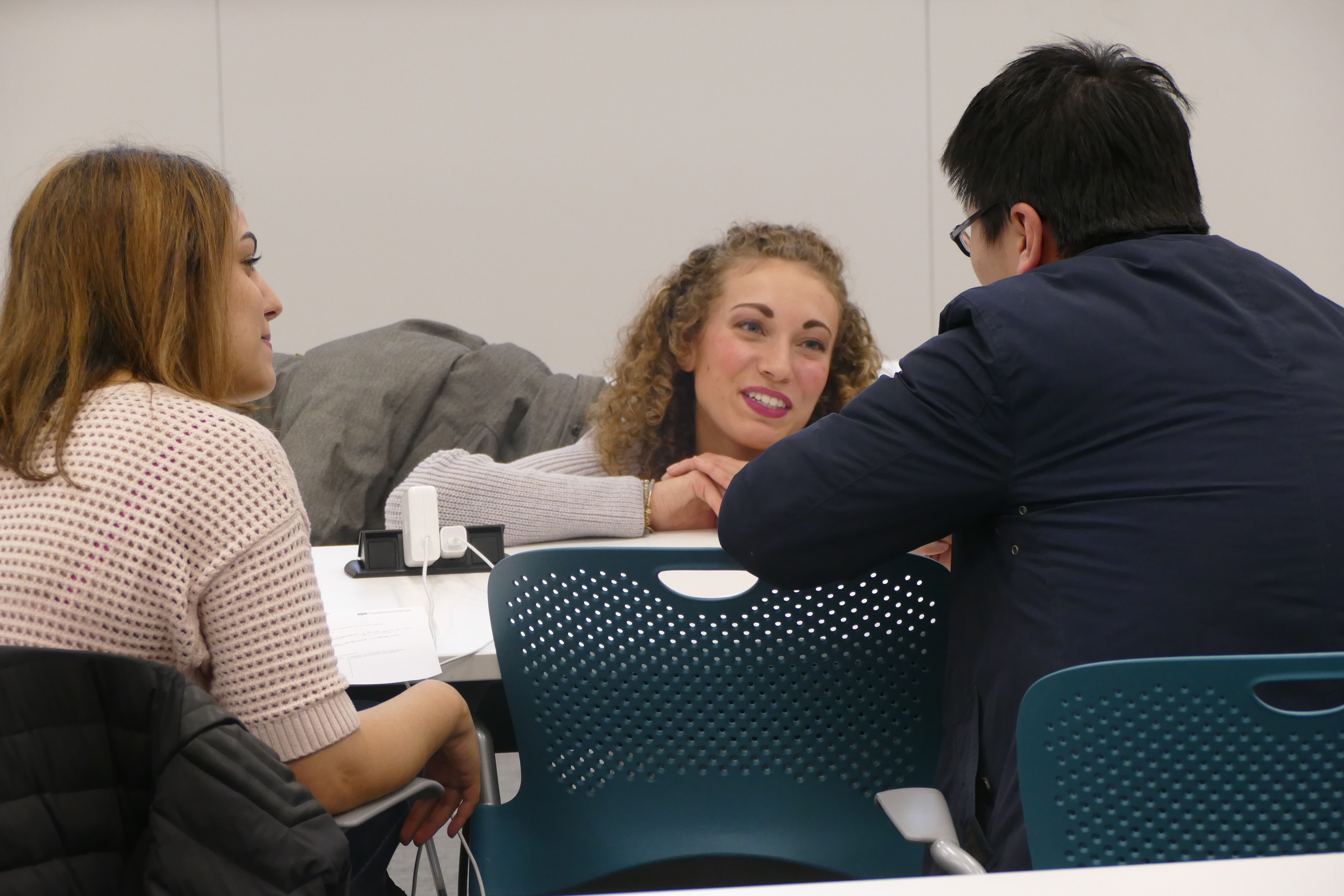Grad Life: Learning to Communicate about Engineering
-
-
slice.mit.edu
Filed Under
Recommended

When people think MIT, they think of technical excellence and groundbreaking innovation. And that’s awesome. Yet I fear people think these breakthroughs are made by people resembling the characters on the Big Bang Theory—caricatures of technical, intellectual types that cannot communicate well or relate closely to other humans.
But last week I got to be a part of something so counter to that trope. Together with my colleagues at the MIT Communication Lab, I was invited to demo our communication education model at Northeastern University.
How did such a communication-centric venture come to be at MIT? In 2012 the MIT Biological Engineering Department (BE) surveyed students and saw a trend: students were eager to amplify their professional impact, whether in academia, industry, or beyond, by improving their communication skills. To meet that desire, the department decided to invest in additional communication support for its students.
After some experimentation under the fearless leadership of Jaime Goldstein, the basic form of the Communication Lab was launched in 2013 and proceeded to go viral at MIT.
The Comm Lab, as we call it, is a discipline-specific communication resource for engineers, by engineers. The lab is staffed by graduate students and post-docs who are trained in effective communication principles and coaching practices. Those Comm Lab Fellows then serve their fellow scientists in one-on-one coaching sessions, as well as in targeted workshops and specific in-class support. By providing “just-in-time for the deadline” support through a peer coach who understands the science, we’ve seen great results with STEM students.
We don’t just give instruction, we share our own challenges.
More Communication Labs have been founded in NSE, EECS, ChemE, and at the Broad Institute, with a MechE lab launching soon.
This rapid success has caught the attention of outside institutions (like Caltech, Brandeis, and Boston University) through our discipline-specific CommKit resources and our Summer Institute. And that is how I got to be a part of pitching the Comm Lab model and demonstrating our approach through a poster-making workshop at Northeastern University.
Mind
When I designed the workshop along with my classmate Lauren Stopfer, we set out to answer the question “How do you take a pile of figures and data and protocols and turn them into a kick-butt poster?”
We took what we learned about effective posters in our Comm Lab training, along with our own professional experience with posters, to deduce a common structure for effective posters and reverse engineer a poster design workflow for integrating pieces of content into a finished product. With a formula and a process, any engineer can work out a solution.
Hand
It’s one thing to give an engineer a formula, it’s another thing to teach them to apply it to the problem at hand. We also showed the students a general formula for an elevator pitch to answer the question that starts most poster presentations: “What are you working on?”
Here’s the application:
- draft a pitch for your own research project
- read it aloud with someone nearby, and
- modify the same pitch for a less expert audience on the fly.
The students absorbed the material through practice and identified where they can improve by getting instant feedback.
Heart
The best part of a workshop is empowering scientists and engineers to communicate well. In each piece of the workshop—the real-life examples, the formulas, the diagrams, the tips and tricks—we try to inject a bit of our own experience, because we are still learning how to communicate well, too.
We don’t just give instruction, we share our own challenges—saying to students:
“I know it can be daunting to make your own schematics, but it really is worth it to have clear, concise figures. It took me several hours to make my own schematic of hormone signaling my first year, but four years later I’ve gotten to use that figure over and over again.”
I think this honesty not only opens the ears of our peers, but also builds a sense of community and camaraderie when undertaking communication tasks that induce anxiety and self-doubt.
When people think MIT, I am sure they think of technical excellence. But when these peers finally get to that breakthrough or discovery, I hope that it will have the impact it ought to have on their field and in their community because they are expert communicators.
For more information, please visit the MIT Communication Lab online.
Grad Life blog posts offer insights from current MIT graduate students on Slice of MIT.







